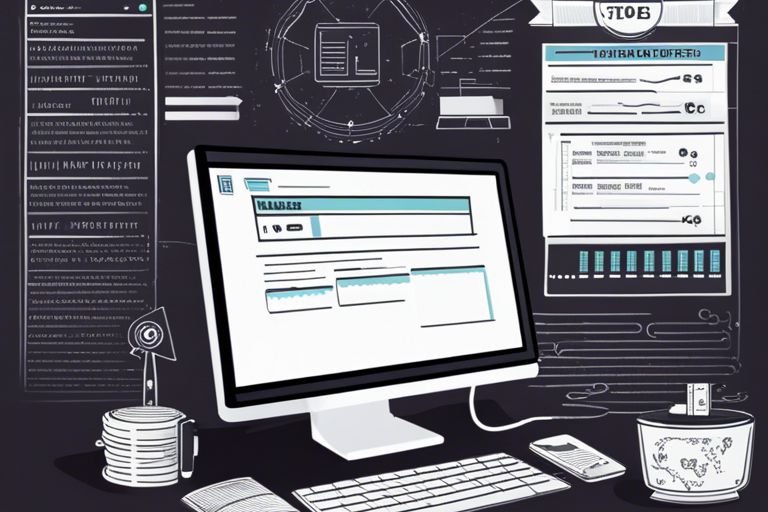Just like a sommelier carefully selects the finest wines, mastering the art of web scraping requires finesse, precision, and a keen eye for detail. In this ultimate guide, we will investigate into the world of web scraping, exploring tips, tricks, and best practices that can elevate your scraping game to the next level. Whether you’re a seasoned pro or a novice in the field, there’s always something new to learn when it comes to extracting valuable data from the vast ocean of the internet. So grab your tools, sharpen your skills, and let’s uncover the secrets to becoming a web scraping virtuoso.

The Toolkit: Software And Skills For Elite Scrapers
Choosing The Right Tools For The Job: A Comparative Look
Software
| Tool | Pros |
| Beautiful Soup | Beginner-friendly, great for small projects |
| Scrapy | Scalable, built-in support for selecting, extracting, and saving data |
Skills
Languages: Python, JavaScript, Ruby
Libraries: Requests, Lxml, Selenium
Coding Skills That Pay The Bills: Languages And Libraries
Languages like Python and libraries such as Requests and Lxml are vital for web scraping success. Python’s versatility and ease of use make it a top choice for scraping, while libraries like Requests simplify the process of sending HTTP requests and handling responses. Lxml, with its powerful XML and HTML parsing capabilities, streamlines data extraction.
Ethics and Legality: Staying On The Right Side of The Web
Respecting The Rules: Understanding Robots.txt And Terms of Use
The internet is like a vast playground filled with valuable information waiting to be discovered. However, just like in any playground, there are rules that need to be followed. One of the key ways to show respect for websites is by adhering to the guidelines set out in the Robots.txt file and Terms of Use. These documents outline what is allowed and what is not when it comes to web scraping. By understanding and honoring these rules, you can ensure that you are scraping ethically and legally.
Legalities Unraveled: What You Can and Can’t Scrape
On the journey of mastering web scraping, it’s crucial to have a solid grasp on what is permissible and what is off-limits. While the web is a treasure trove of data, not all of it is free for the taking. Each website has its own set of rules dictating what can be scraped and how the data can be used. It’s imperative to familiarize yourself with these guidelines to avoid running into legal trouble.
What are some common restrictions you might encounter? Some websites explicitly prohibit scraping their content, while others may allow it but only for personal use and not for commercial purposes. Additionally, certain data such as copyrighted material or personal information may be off-limits for scraping. By staying informed and respecting these boundaries, you can navigate the web scraping landscape with confidence and integrity.
Advanced Techniques: Upping Your Scraping Game
- Dynamic Data and AJAX: Conquering JavaScript-Heavy Sites
- Anti-Scraping Technologies: How To Bypass Them Like A Pro
| Technique | Description |
| Use headless browsers | Automate browser actions to interact with dynamic content |
| Inspect network requests | Identify API calls for fetching data dynamically |
| Emulate user behavior | Simulate clicks and scrolls to trigger data loading |
| Technique | Description |
| Rotating IP addresses | Switch between different IPs to avoid detection |
| Using proxies | Route requests through proxy servers to mask origin |
| Browser fingerprinting | Mimic human behavior to trick anti-scraping mechanisms |
Dynamic Data and AJAX: Conquering JavaScript-Heavy Sites
One of the challenges of web scraping is extracting data from sites that heavily rely on JavaScript for content loading. To tackle this, you can leverage headless browsers like Puppeteer to automate browser interactions, inspect network requests to identify data sources, and emulate user behavior to trigger dynamic content loading.
Anti-Scraping Technologies: How To Bypass Them Like A Pro
Upping your scraping game involves overcoming obstacles posed by anti-scraping technologies. To bypass them like a pro, consider rotating IP addresses, using proxies to mask your origin, and employing browser fingerprinting techniques to mimic human behavior and evade detection. Stay ahead of the game by staying innovative in your approach to web scraping.

Optimizing Performance: Speed, Efficiency, And Maintenance
Scaling Your Scraping Operation: How To Handle Big Data
All successful web scraping operations eventually face the challenge of dealing with big data. Performance is key when it comes to handling large amounts of information efficiently. One way to optimize speed and efficiency is by implementing parallel processing. This method allows you to divide the workload among multiple threads or processes, enabling faster data retrieval and processing.
Regular Maintenance: Keeping Your Scraping Code Healthy
Efficiency is not just about speed; it’s also about maintaining the health of your scraping code over time. Regular maintenance is crucial to ensure that your web scraping scripts continue to function smoothly. Keeping your code up-to-date with changes in the target website’s structure and implementing error handling mechanisms will prevent disruptions in your data extraction process.
Summing up
Following this piece on mastering the art of web scraping – tips and best practices, remember to always stay ahead of the game. Get dirty and get things done. Make sure you’re utilizing the latest tools, tips, and techniques to scrape the web effectively. Be mindful of, the world is your oyster – don’t wait for opportunities, create them by mastering this powerful skill. Keep hustling, keep grinding, and keep scraping!







Leave a Reply